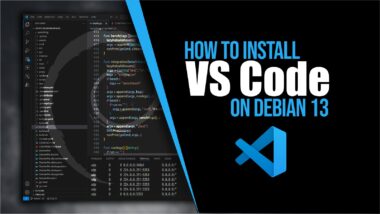How to Install VS Code on Debian 13 “Trixie”


 The fourth monthly snapshot of Ubuntu 25.10 (Questing Quokka) is out, the final before the Ubuntu 25.10 beta release in September. Fancy testing it?
The fourth monthly snapshot of Ubuntu 25.10 (Questing Quokka) is out, the final before the Ubuntu 25.10 beta release in September. Fancy testing it?
You're reading Ubuntu 25.10 Snapshot 4 is Available to Download, a blog post from OMG! Ubuntu. Do not reproduce elsewhere without permission.
 If you’re a fan of iconic open-source racing game SuperTuxKart, you will have noticed that effort on the upcoming 1.5 release has stalled, having hit beta in late 2024 and release candidate status in spring 2025 but with no real progress since. Now, in an update shared by STK developers, we know why: inter-team disagreement. Any group-based effort — though felt more keenly in open-source projects as internal structures for mitigating disagreements are less formal — clashes in priorities, plans, and personalities are not uncommon, and can put the brakes on progress. If one person in a project has more […]
If you’re a fan of iconic open-source racing game SuperTuxKart, you will have noticed that effort on the upcoming 1.5 release has stalled, having hit beta in late 2024 and release candidate status in spring 2025 but with no real progress since. Now, in an update shared by STK developers, we know why: inter-team disagreement. Any group-based effort — though felt more keenly in open-source projects as internal structures for mitigating disagreements are less formal — clashes in priorities, plans, and personalities are not uncommon, and can put the brakes on progress. If one person in a project has more […]
You're reading SuperTuxKart Evolution Aims to Accelerate Development of Iconic Racing Game, a blog post from OMG! Ubuntu. Do not reproduce elsewhere without permission.


 Ubuntu 25.10’s new terminal and image viewer apps are part of the latest development builds, (along with a much-hyped switch to Rust-based sudo and, less-hyped, the inclusion of new Ubuntu Insights and hwctl packages). At the start of this cycle developers working on Ubuntu announced plans to ship Ptyxis and Loupe as default terminal emulator and image viewer respectively. Both are solid replacements to GNOME Terminal and Eye of GNOME, able to take advantage of new technologies and libraries, and do things the old ones couldn’t. The switch to sudo-rs is designed to bolster the distro’s security thanks to Rust’s […]
Ubuntu 25.10’s new terminal and image viewer apps are part of the latest development builds, (along with a much-hyped switch to Rust-based sudo and, less-hyped, the inclusion of new Ubuntu Insights and hwctl packages). At the start of this cycle developers working on Ubuntu announced plans to ship Ptyxis and Loupe as default terminal emulator and image viewer respectively. Both are solid replacements to GNOME Terminal and Eye of GNOME, able to take advantage of new technologies and libraries, and do things the old ones couldn’t. The switch to sudo-rs is designed to bolster the distro’s security thanks to Rust’s […]
You're reading New Default Apps Finally Hit Ubuntu 25.10 Daily Builds, a blog post from OMG! Ubuntu. Do not reproduce elsewhere without permission.